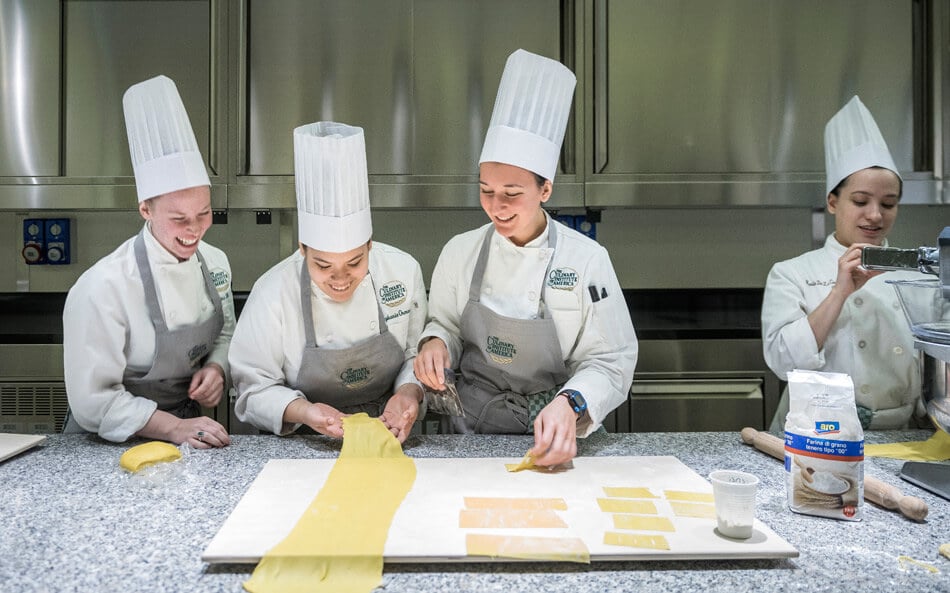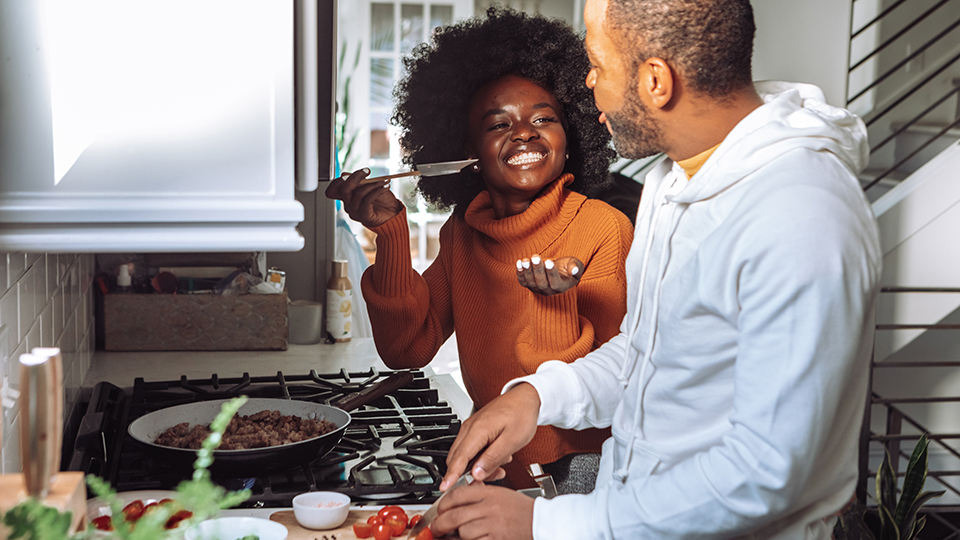
I wrote about the importance 101 of cooking skills and how Joey Delago's class explains each skill and task. I discussed the task-centred categories of cooking skills and their applications, including Activating yeast and making stocks. These skills are crucial for any cook, and a list can help you decide which ones to master and which ones to ignore. This article will discuss some skills that you need to master before moving on to the next stage of your culinary journey.
Chef de Cuisine Joey DeLago's cooking skills 101 class
Chef de Cuisine Joey DeLago's cooking skills 101 class is for you if you ever wanted to be a professional chef. This hands-on class covers the essential culinary skills that you need to prepare a multi-course meal. Joey will be sharing tips and tricks about planning, timing, presentation, prepping, and timing. Plus, you will be able to share the finished meal with other home-cooks!
Skills in cooking that are task-specific
The Food Agency defines cooking skills as a set of knowledge, skills, and practices that facilitate a nutritious diet. This framework acknowledges that many barriers to a healthy diet lie in the environment, but it focuses on promoting food skills by identifying appropriate measures. These measures need to be easily understood, related to other domains, and applicable across a wide variety of sociodemographic groups. These four categories aim to address some the most pressing problems in the field of food skills.

Activating yeast
You will need to know how activate yeast if you want to use it in your cooking. To activate yeast you can warm tap water and run a bit of hot water through. Sometimes, you might need to add sugar or water. These are some ways to activate yeast. It's ready to use once the yeast has reached a bubbly stage. For baking success, activating yeast is an essential step.
Making stocks
Stocks can add flavor to your meals and provide depth to the dish. Stocks can be made from vegetables, meat, or fish and can also have Western or Asian origins. You can use bottled water to make your own stock, but you may want to try using filtered water found at the supermarket. There are many stock recipe options, but it is important to know the basics to ensure your stock tastes as good as possible.
Whipping cream
Whipped cream makes a great topping for a dessert or cake. While it is easy to make, there are important things to keep in mind as you prepare this classic dessert. It looks almost like slightly melted ice-cream, but it is not. Whipping cream should not be stiff and sloppy. It should form a soft, fluffy, curled peak that sticks well to the whisk. You can also make soft peaks by beating the cream with a spoon until it holds its shape and does not slack off.

Melting chocolate
Learning how to melt the chocolate is a must-have skill if you want to create amazing desserts. This is a complex task. We have some tips that will help you speed up the process and make sure it's done correctly. First, it is important to understand the correct technique. There are two ways to melt chocolate: double boiler method and the microwave method. Double boiler method involves using a heatproof bowl or pan with a glass or stainless steel bottom nestled over a saucepan of simmering water. This method should be used slowly, and you should avoid allowing the water to splash into the bowl.
FAQ
How do I learn to cook like a professional?
Cooking can be a great way for you to grow as a person. Cooking healthy meals for your family and friends is a great way of increasing self-confidence and learning new skills. Begin cooking at your own home if you are looking to improve your culinary skills. The first step is to find out what kind of recipes you like. Next, study books about different foods like Chinese, Mexican and Italian. Finally, make sure you practice different recipes until you feel confident.
How to Become a Chef?
There are many routes to becoming a chef. You can begin by taking a course at a community college or vocational school. Consider attending culinary school. A paid internship is another option.
What are the Qualifications to be a Chef
A bachelor's degree in culinary art is necessary to become a professional chef. A series of tests must be passed by the ACF. You will be issued a certificate once you meet all the requirements.
How long does it take for you to learn to cook? How long do I need to learn to cook?
It depends on what kind of skill level you are trying to achieve. Some people can master basic cooking techniques in a matter days. Others might need months or even years to master basic cooking techniques.
The time it takes to learn how to cook will vary depending on who you are. For example, someone who has never cooked before would probably need more time than someone who cooks regularly. Some types of cooking are more difficult than others. Baking is more difficult than frying.
Learn a technique to increase your ability to cook quickly. Once you have perfected that technique, you can move on. Don't worry too much about the exact number of days or weeks it takes to learn to cook. You can just keep at it and enjoy the process.
Do I need to go to culinary school to be a chef?
No. Many chefs learned their craft on their own. Some chefs even attended culinary school to gain more experience. But most chefs prefer culinary school as it offers them more opportunities for learning and growth. Culinary schools give students hands-on experience, which allows them to develop valuable skills as well as improve their culinary knowledge.
How much does it cost to go to culinary school?
The cost of a culinary school depends on where you are, how much you study, and what program or course you choose. The average tuition ranges from $10,000-$30,000 per year. Most students graduate with about $20,000 in debt. Some programs offer work-study, grants, scholarships and grants.
Is there a difference between a chef and a cook?
A chef cooks for others. A cook prepares food for his or her own consumption. While both jobs involve preparing food, a chef works directly with customers. This may mean that they might have to choose what to cook for guests depending on their preferences. A cook doesn't need to interact with clients. Instead, they ensure that the food tastes delicious before they serve it to others.
Statistics
- According to the BLS, chefs earn $58,740 a year. (learnhowtobecome.org)
- The median pay for a chef or head cook is $53,380 per year or $25.66/hour, according to the U.S. Bureau of Labor Statistics (BLS). (learnhowtobecome.org)
- You'll be amazed that over 90% of CIA students receive scholarships and grants to finish their culinary studies. (ischoolconnect.com)
External Links
How To
How to make a perfect omelet
Omelets have always been a favourite food to eat for breakfast. How can you make them perfectly? Many different recipes and methods have failed to work for me. Today, I'd like to share some tips with you in order to make delicious and fluffy omelets every day.
It is important to know that eggs can be temperamental when making omelets. You must get them fresh, organically, and keep them cold until you cook. If you don't keep them cold enough, the whites won't form properly, and the yolks will break down too much and become runny. This will make your omelets appear strangely colored. If you want to make omelets right away, it's best not to use eggs that are too cold.
Another tip is to separate your egg before adding it into the pan. The yolk and white should not be mixed together as this can cause the omelet's curdle.
If you add the egg directly onto the stovetop, you might end up burning the bottom part of the egg, which would ruin the texture of your omelet. Instead, heat the egg for 10 seconds in the microwave before placing it in the pan. The microwave heat will cook the egg just right without making it too hot.
Next, let us talk about how to mix the eggs. When mixing eggs, it is important to thoroughly beat them. You need to turn the bowl of the mixer upside down. Next, shake the bowl vigorously. The egg will be thoroughly mixed in the bowl as the air is whipped.
The fun part begins - you need to pour the milk into your mixture. First, pour half of the milk into the beaten eggs and then fold the eggs gently into the remaining milk. If you still see streaks of eggs, don't worry. These streaks will disappear once the omelet has been turned over.
After folding the eggs, place the pan on medium heat and wait for the oil to start sizzling. When the oil is hot enough, add 1/4 cup butter to the pan. Stir it around until the butter covers the entire pan. Next, carefully open the lid and sprinkle salt into your pan. An additional pinch of salt will prevent the omelet form sticking to your pan.
Once the omelet has formed, cover the pan again and wait for the top side to set completely. Use a spatula to flip the omelet or turn the pan upside-down. Cook the other side for another minute or two. Serve immediately after removing the omelet from its pan.
This recipe works best with whole milk, but skimmed milk also works.